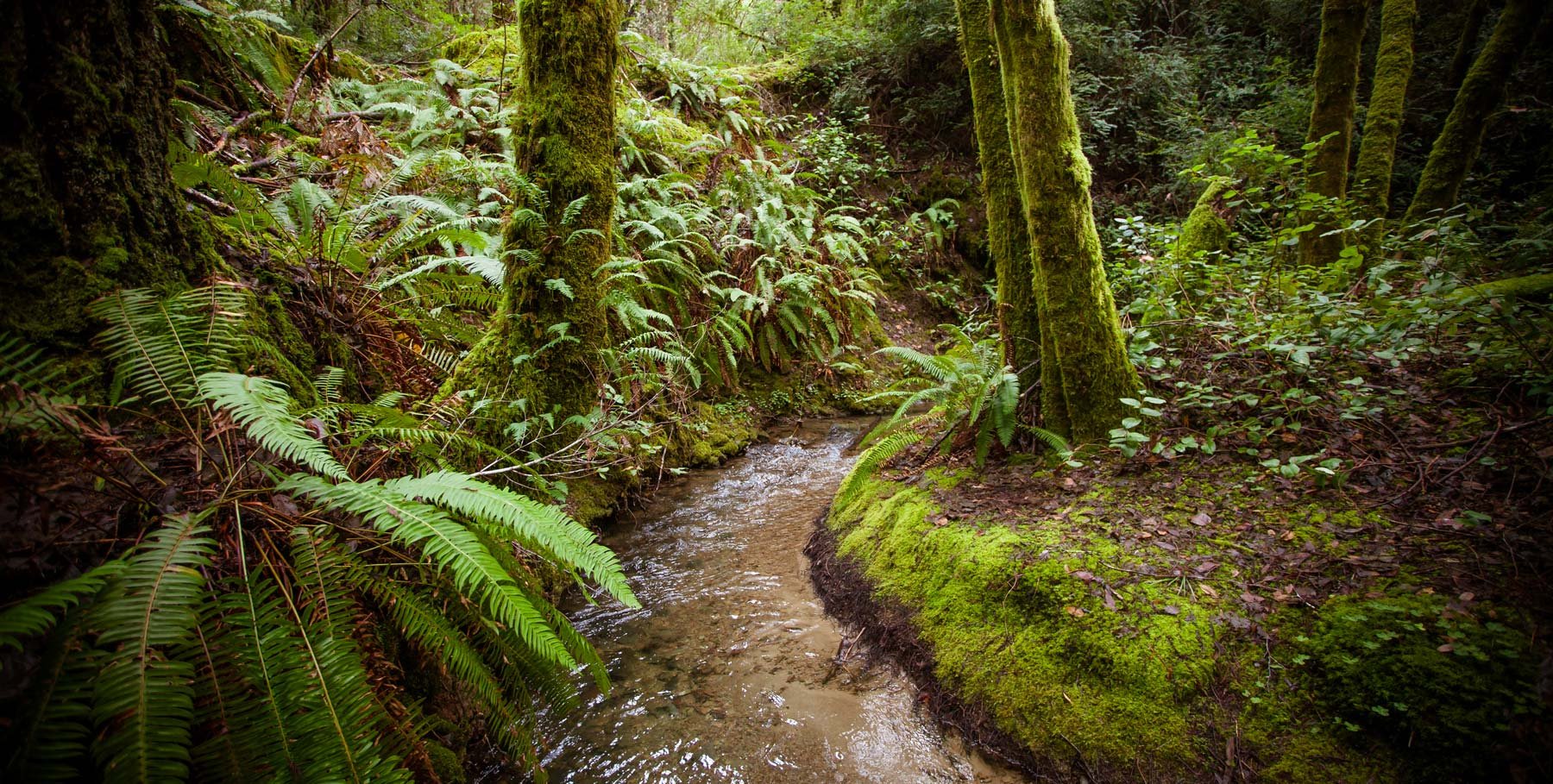A Logo for Progress
How farmers are promoting product and ecology alike
Van Arken Creek, a main tributary to the Mattole River.
Photo by Amy Kumler
With more people stepping into the realm of legalization, cannabis farmers are discovering new means of distributing their product and communicating the quality of their work and personal mission statements. In the case of the Save the Van Arken logo, we find a holistic branding for a high quality product and a banner waved by progressive and ecologically mindful cultivators.
This logo dates back to late 2016 during a Mattole Creek Tributary meeting held by Sanctuary Forest. After learning that the Mattole region was being liquidated, the organization held a series of community discussions on claiming ownership of the Van Arken watershed. While the total cost is great, approximately $9 million, the organization would find themselves managing the cost through a much smaller metric.
Lands Program Director Galen Doherty recalls this meeting as having “unequivocal” positivity from community members and watershed owners who admonish alternative buyouts from logging companies. “The land is roughly $5,500 an acre. Nine million dollars seemed like a lot but we had to start somewhere,” says Doherty. “How about we fund half an acre this year and half next year?” Following this query were two more voices piping up from the community saying they, too, would be happy to put money toward an acre of the Van Arken. As the meeting concluded, Doherty and others decided it would be advantageous to start a fund-an-acre campaign under an official moniker.
The unifying energy of the project is not the only positive proponent. If Sanctuary Forest is successful in purchasing this land in full, it will prevent deforestation and damaging of habitats found in the Mattole watershed. Species of fish like the steelhead and Chinook are at risk of losing their habitat, and the coho could be rendered extinct locally. Logging and manipulation of river banks deprive these fish of the natural flow and temperature regulation required for their use of the tributary. A general thinning of forest body and disturbance of root systems results in a drier, more fire-susceptible forest.
Thus far, more than $2 million has been rasied by the Fund-An-Acre campaign with 80 donors in the last year. These donors have been able to breakdown their offerings into manageable payment plans. Of those 80 donors, 15 of them have been cannabis farms, including Briceland Forest, Happy Day and Huckleberry Hill Farms. In exchange for their support, the farms are awarded with a Save Van Arken logo.
“This is really exciting,” says Doherty. “Be it on their store front, on a bumper sticker on their car, on their pre-rolled pack of joints. It says that this person or business is permanently protecting an acre of a highly valuable, incredibly bio-diverse land in the Mattole headwaters.” Doherty estimates that the farmers are offsetting their farms’ footprints at least once over and in turn, recasting the image of the cannabis farmer as a individual who cares just as much about the earth below them as the flowers it supplies.
The Save Van Arken logo.
While the logo itself is hosted across farm’s official websites, its imprint on various products is often coupled with a QR code. Scanning this code will enhance the concept with images and videos of the Van Arken creek and forest land. “It’s not what people usually see or think of when they go to buy some Humboldt County cannabis,” says Doherty. “Before legalization, no farmer had a way to stand up and say, ‘I’m doing everything I can to reduce my impact on the land and be sustainable.’” In brandishing this movement, farmers who were doing the right thing all along can be publically recognized for their good intention and divorce negative stigmas of being ecologically harmful. “They immediately saw it as a clear way to stand with an environmental group on a really important project and show the world that they’re as eco-friendly as possible.”
While grant funding fuels 55 percent of the budget, donor dollars are essential to protecting the Van Arken. When appealing to the state, a pledge, even an unfulfilled one, will be counted and represents the project’s strength. “We see this as the beginning of a symbiotic relationship,” says Doherty. As they go statewide to communicate their message, they are advertising the farms that have pledged and are promoting their products.
“The more we can get that consumer education, the more people will choose regenerative cannabis from Humboldt County. That’s where the best weed comes from and it helps protect land in the county. That’s how we’ll drive business back to these farmers.”


